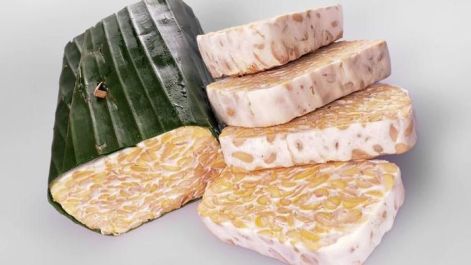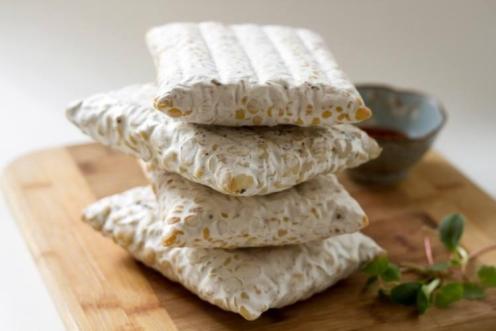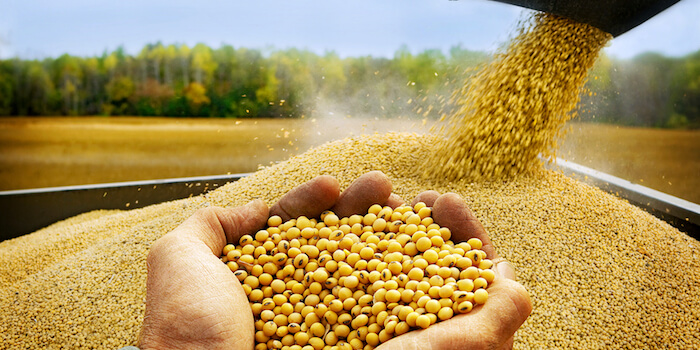Commonly, tempeh is known as soy product. This kind of food is usually white in color like stringy, and also has solid shape.
In fact, there are many types of tempeh whose raw materials are not derived from soybeans only. The efficacy and the usefulness of each type can also be different.
Even, among the following types, there are some that we do not know at all. Please have a look at these 7 common types of tempeh that you can find in Indonesia.
The 7 Kind Of Tempe in Indonesia
-
Soybean Tempeh
This type of tempeh is the type of soybean that were mostly encountered and popular in many areas in Indonesia. The raw materials are derived from soybeans with the help of starter to ferment the beans to become tempeh.
Soybean tempeh contains vitamins B and E, minerals, calcium, phosphorus, iron, fiber, protein and fats that are good for the body.
Not only in Indonesia, the soybean tempeh has also been popular in the world. You can find this food easily in the supermarket, grocery stores, even you can find it easily in the online stores.
What makes it so popular? Soybean tempeh is known not only for its delicious taste, but also the health benefits to humans body. Eating such food feels like you are eating meat but with different sensation.

-
Bongkrek Tempeh
This kind of tempeh nowadays are not much produced. The making of bongkrek tempeh has actually been banned since 1969, but in reality there are still residents who produce or consume these very dangerous foods.Before that time, a lot people was poisoned after eating Bongkrek tempeh.
This kind of tempeh is made from coconut pulp, the industrial and also household waste. That’s is why it can cause poison because it contains quite high acid, and has exceeded the recommended limits.
The excessive consumption of bongkrek tempeh is very dangerous and can cause death due to contamination by a type of bacteria that grows faster than bongkrek fungi.

-
Koro Sword Tempeh or Jack Bean Tempeh
Koro sword (Canavalia enciformis) tempeh is made from Jack bean (it is like soybean but much bigger). Long time ago, a lot of people made koro tempeh to be consumed daily.
It actually contains toxic cyanide acid. But if the making processes included the process of soaking and washing repeatedly and then boiled for a period of time, then koro tempeh can be made into delicious. It is also safe from toxins.
Koro tempeh or jack bean tempeh has the appearance of soy tempeh. This is an alternative ingredient for making tempe besides soybeans.
The shape is solid and compact with mushrooms or cotton on the surface. This tempeh has a distinctive savory taste and has a soft texture. It also contains about 9-10% of protein so it is good enough for the body’s source of protein.

-
Benguk Tempeh or Surly Tempeh
This type is also derived from koro, but of the kind of surly (Mucana pruriens). This is a tropical legume native to Africa and tropical Asia and widely naturalized and cultivated.
Its English common names is velvet bean. This tempeh nowadays can be found mostly in the traditional markets.
The benguk or surly seeds are about the size of a marble with an oval shape and slightly flat. These seeds are usually gray to black. In one Benguk pod skin generally contains 3 higga 5 Benguk seeds.
The seeds are then processed into Benguk tempeh by processing such as making soybean tempeh.
The nutritional content in this tempeh is also not much diferent with the soybean tempeh. The presence of stinging is also expected to be a substitute or alternative to soybeans that are increasingly soaring. This tempeh do have a lower protein content than soybeans.
But the carbohydrates are doubled. In addition, it also has a fairly high nutrition.

-
Green Beans Tempeh or Mung Beans Tempeh
In general, green beans (vigna radiata) was made into a green bean porridge or Burjo in Yogayakarta. The mung beans are mainly cultivated in East Asia, Southeast Asia and Indian subcontinent. It is used as an ingredient in both savory and sweet dishes.
Green beans can also be made into tempe that tastes good and contain high nutrition. In some places in Yogyakarta, tempeh of this type can be easily found although not as many as the common soybean tempeh.

-
Cowpeas Tempeh
Cowpeas can indeed be an alternative raw material for tempe besides soy. These beans are known by several names, namely tolo beans or dadap beans.
This is one of the delicious vegetable ingredients to be used as food. It can be cooked into a snack, stir-fry, or be served as any type of menu.
This type of bean contains nutrients and is a good source phytoprotein. Therefore, it has a potential opportunity to replace soybean in producing tempeh.
Cowpeas are usually sold in dry form so they must be soaked in water before being processed into tempeh. These beans have smaller grains than soybeans, so when they become temphe the texture becomes denser.

-
Gembus Tempeh
Tempe gembus is tempeh which is made from okara or the pulp of tofu production. The texture is very soft and it has white surface. This tempeh is best served when fried using flour with thinly sliced.
It can also be made into bacem (boiled wiht palm sugar). This is the picture of gembus bacem:

The taste of tempeh gembus is so soft and delicious, and is suitable when used as a snack or dish, not the main menu. The nutritional content of the tempe gembus is quite good.
But you can consume them alternately with tempeh and tofu so you can get the maximum benefits.

In addition, there are still more many types of tempeh made from different type of beans. For example: llamtoro tempeh, menjes tempeh, pigeonpea tempeh, munggur tempeh and others.
And please open the article about non-soybeans tempeh that you will possibly provide you more information.
Contact us at:
Call/SMS/WA
+62 857 4849 1242
E-mail:
tempebumbung@gmail.com
Address:
Maron, Donoharjo, Ngaglik, Sleman, Yogyakarta, Indonesia 55581
Related:
Soybean tempeh, how to make tempeh, tempeh recipe, tempeh recipe Orek, ways of making tempe, tempe Orek recipe, the process of making tempe, tempeh dishes


Very interesting. I enjoy makng Tempeh and experimenting a bit. Might have a go at that coconut pulp one 🙂
LikeLike